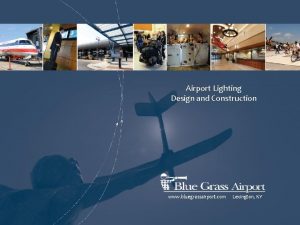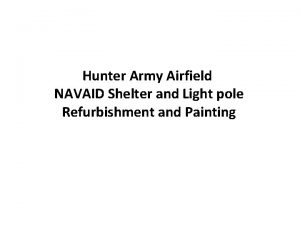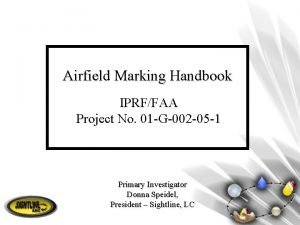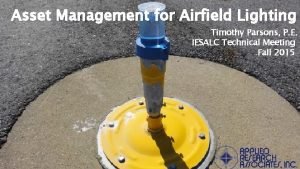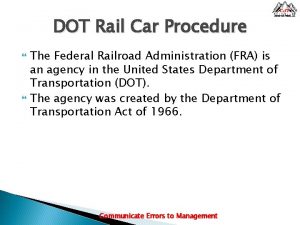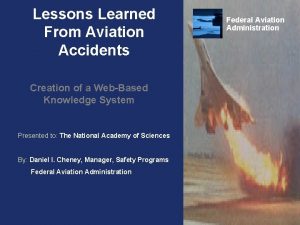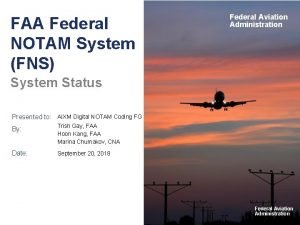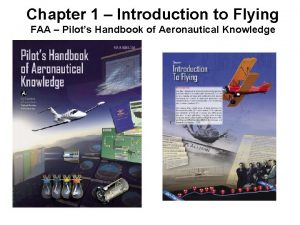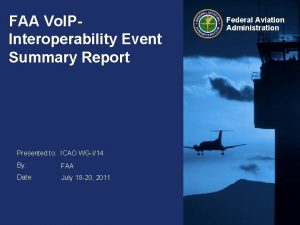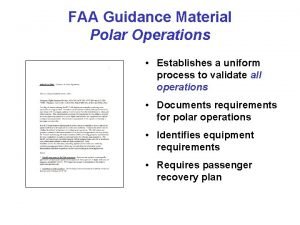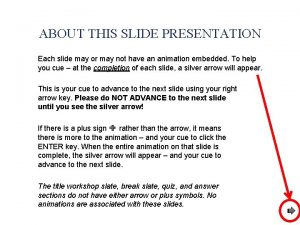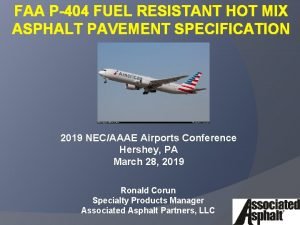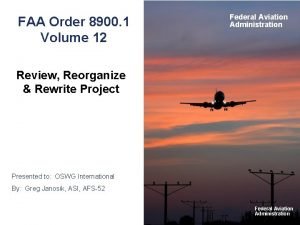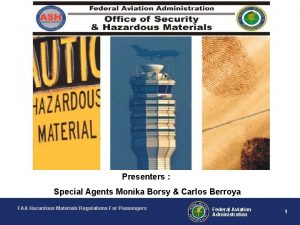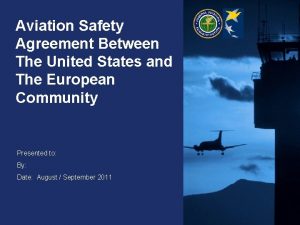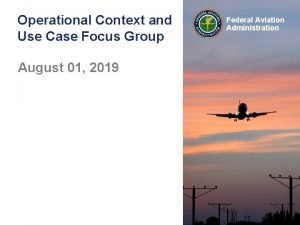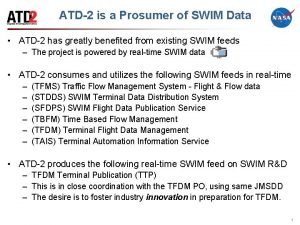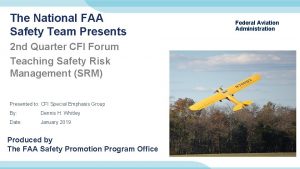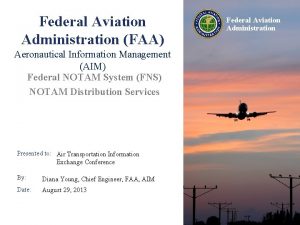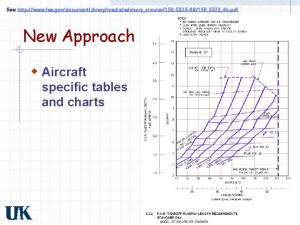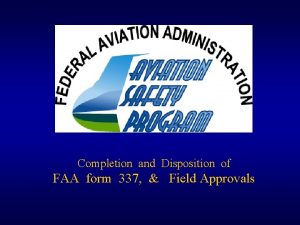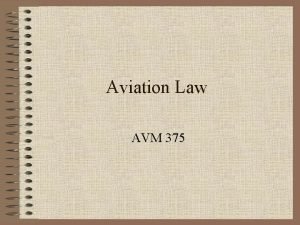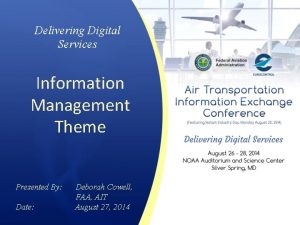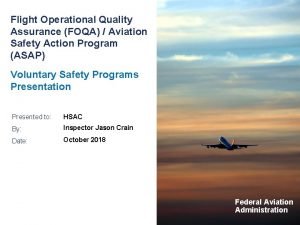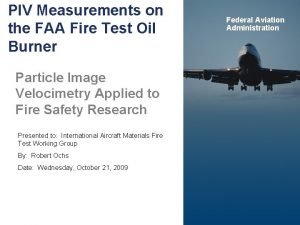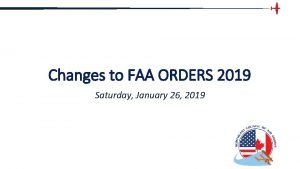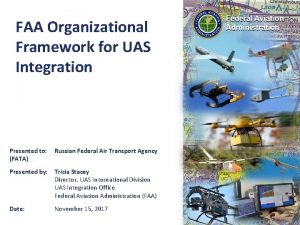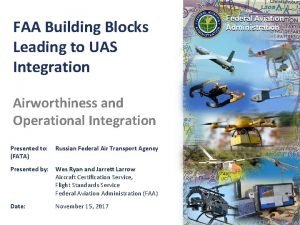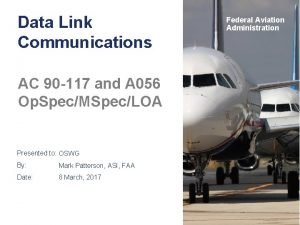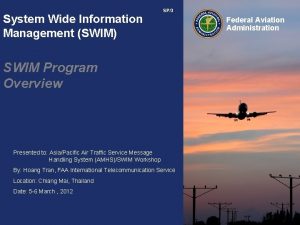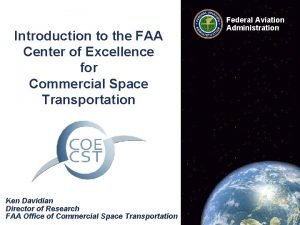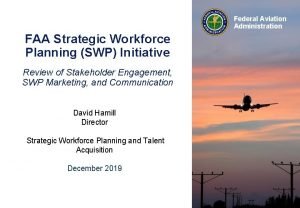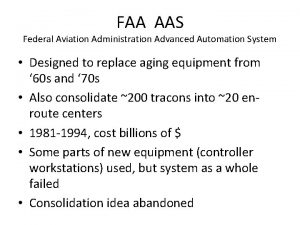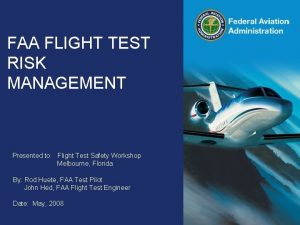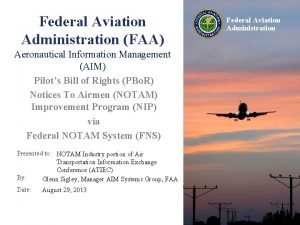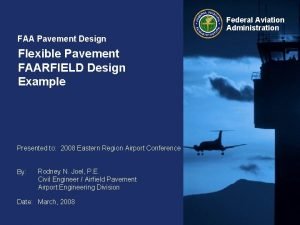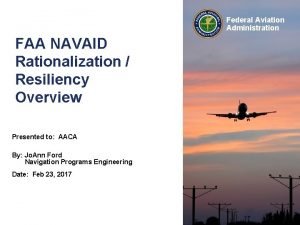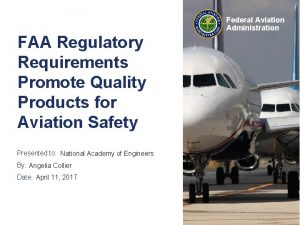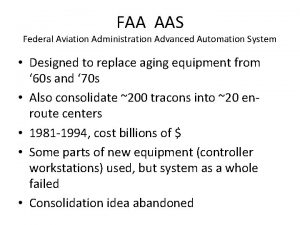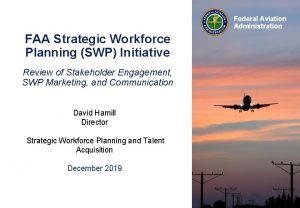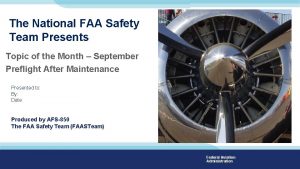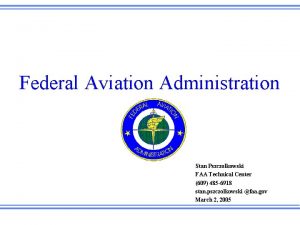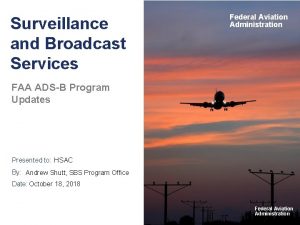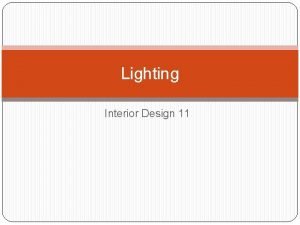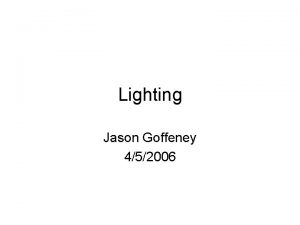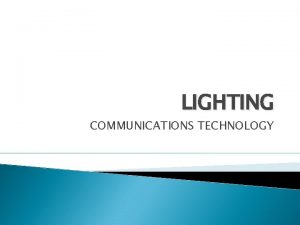Federal Aviation Administration FAA AIRFIELD LIGHTING STANDARDS UPDATE












































- Slides: 44

Federal Aviation Administration FAA AIRFIELD LIGHTING STANDARDS UPDATE IES ALC - Fall Technology Meeting Denver, CO Oct 19, 2015 Tom Mai FAA Office of Safety and Standards Airport Engineering Division (AAS-100)

Federal Aviation Administration 11/5/2020 2

Agenda • FAA Plan &Spec Review • FAA Airfield Lighting Equipment Advisory Circulars (AC’s) & Engineering Briefs (EB’s) Published in FY 2015 (10/1/2014 to 9/30/2015) • FAA Airfield Lighting Equipment Draft AC’s & EB’s for FY 2016 • FAA Significant Safety Issue (SSI) • Q & A Federal Aviation Administration 3

FAA Review of Construction Plans and Specifications for AIP Funded Projects Federal Aviation Administration 4


Background • 2010 - FAA Review of Plans and Specifications (P&S) identified as a high value activity (HVA) • 2011 – Business Plan Goal to setup team to work on standardization of P&S review • 2012 -2014 – ARP team developed a matrix template and checklists for reviews • Dec 2014 – Implementation memo signed by AAS-1 Federal Aviation Administration

Overview of Implementation Memo • Provides standardized guidance for all regions/ ADOs to use • Reviews required for AIP funded projects, encouraged for others • Risk based criteria to focus ARP resources on projects of higher dollar value, type of project and category of airport • Ensures compliance with standards and proper use of AIP funds Federal Aviation Administration

Implementation Dates • Dec 8, 2014 – Program Managers (PMs)& Engineers encouraged to use Review Matrix and Review Guide for P&S reviews • Mar 1, 2015 –PMs & Engineers required to use Review Matrix and Review Guide for P&S reviews for AIP projects at Part 139 airports and AIP projects greater than $2 M at GA airports • Oct 1, 2015 – PMs & Engineers required to use Review Matrix and Review Guide for P&S reviews on all AIP projects Federal Aviation Administration

Objective of P&S Review by FAA • Check conformance to approved scope of work • Verify that work meets AIP eligibility and justification • Check conformance to FAA design and construction standards – Looking for deficiencies as well as areas exceeding standards Federal Aviation Administration

What the FAA P&S Review is Not • A quality control check for Engineer of Record • To validate technical engineering calculations • To give technical direction to Engineer of Record • To relieve Engineer of Record from professional duty related to P&S • An approval of any Mods of Standards Federal Aviation Administration

Determine Level of Review • No Review (Sponsor Certification) • General Review • Full Review Based upon: • Type of project • Type of airport (Part 139/Primary) or Non. Primary • Total est. construction or equipment cost Federal Aviation Administration



P&S- Side Notes • A brief overview on early findings for P&S reviews with regard to MOS and MOS for State Specifications that some regions finding no MOS for changes to specifications. • State standard for airport projects versus state specifications for individual projects • Legislation permits FAA to allow sponsors to use state specifications but that does not mean it may not require a MOS • 12, 500 state specifications no MOS • <12, 500 and < 60, 000 require a MOS for P 401, P 403 and P 501 unless for non aeronautical pavement or shoulders Federal Aviation Administration

AC’s & EB’s PUBLISHED IN FY 2015 • AC 5345 -53 C Airport Lighting Equipment Certification Program (Addendum is updated monthly) • AC 150/5345 -44 K, Specification for Runway and Taxiway Signs (10/8/2015) • AC 150/5345 -42 G, Specification for Airport Light Bases, Transformer Housings, Junction Boxes, and Accessories (Legal review) • AC 150/5345 -46 E, Specification for Runway and Taxiway Light Fixtures (Legal Review) • AC 150/5345 -49 D, Specification L-854, Radio Control Equipment (Legal Review) • EB No. 93, Guidance for the Assembly and Installation of Temporary Orange Signs (Ready to be published) Federal Aviation Administration 15

AC 150/5345 -44 K, Specification for Runway and Taxiway Signs • • • 1. Paragraph 1. 1, reference to dot matrix signs removed. 2. Paragraph 1. 2. 1, the Note about a black outline for the letter “M” is removed from and moved to Appendix I, Figure 19. 3. Paragraph 1. 2. 1, subparagraph e about dot matrix signs is removed 4. Paragraph 1. 2. 4 e – sign shipping and storage temperature requirements are removed because they are stated in paragraph 3. 2. 1, Sign Temperature Requirements. 5. Paragraph 1. 2. 6 – paragraph is clarified with redundant statements removed. The Note is deleted and added to the paragraph as 1. 2. 6 b 4. 6. Paragraph 1. 2. 6 – message array definition added. Sign frame definition added. Sign array definition added. 7. Paragraph 1. 2. 6. i is added to define a sign array. 8. Paragraph 3. 2. 1 – a reference to the appropriate testing paragraph is added. Sign temperature requirements are modified to accommodate LEDs. 9. Paragraph 3. 2. 2 – Reference to testing section applicable paragraphs is added. The Note is deleted and added to the paragraph as 3. 2. 2 d. Federal Aviation Administration 16

AC 150/5345 -44 K, Specification for Runway and Taxiway Signs (Cont. ) • • • 10. Paragraphs 3. 2. 3 – paragraph references to Section 4 are added. 11. Paragraph 3. 2. 5. 1 – stake mounted signs are deleted within lighted sign requirements. 12. Paragraph 3. 2. 5. 2 – message element spacing is added for sign sizes. 13. Paragraph 3. 2. 5. 2, Table 1, Note 4 is added for unlighted signs. 14. Paragraph 3. 2. 5. 4 b is updated to be inclusive of all applicable requirements in the ASTM 4956, Standard Specification for Retroreflective Sheeting for Traffic Control. 15. Paragraph 3. 2. 5. 4. 2 – Note is removed and added as paragraph 3. 2. 5. 4. 2 c 16. Paragraph 3. 2. 5. 6 c is deleted because it is previously mentioned in paragraph 3. 2. 5. 1 c 17. Paragraph 3. 2. 5. 12 e is added because the Note is deleted. 18. Paragraph 3. 2. 5. 14 d is removed because the requirement is already stated in paragraph 3. 2. 5. 11 c. 19. Paragraph 3. 2. 6. 2 is updated to be inclusive of all applicable requirements in the ASTM 4956, Standard Specification for Retroreflective Sheeting for Traffic Control. 20. Paragraph 3. 2. 6. 5 – the exception is removed from the beginning and placed as a Federal Aviation NOTE at the end of the paragraph. Administration 17

AC 150/5345 -44 K, Specification for Runway and Taxiway Signs (Cont. ) • • • • • 21. Paragraph 3. 2. 6. 11 – Instruction Booklet is made consistent for lighted and unlighted signs. Sign maintenance instructions are added 22. Paragraph 4. 1. 1. 1 b is clarified for L-858 R signs. 23. Paragraph 4. 1. 1. 1 f is deleted because it repeats what is stated in subparagraph i. 24. Paragraph 4. 1. 1. 1 k – expected results for the test is added. 25. Paragraph 4. 1. 1. 2, Note 4 is updated to better define testing requirements for curved sign faces. 26. Paragraph 4. 1. 1. 3. 1, IESNA document title added for clarity. 27. Paragraph 4. 1. 1. 3. 3, L-858 B and L 858 H signs are removed from photometry tests. 28. Paragraph 4. 1. 1. 3. 4, NOTE is removed for dot matrix signs. 29. Paragraph 4. 1. 1. 9 is updated for power factor test conditions that are consistent with other ACs. 30. Section 6, Dot Matrix Signage, is removed along with all references throughout the AC. 31. All Figures are updated to a standard format. 32. Figure 5, Note c is clarified. 33. Table 5 is updated to remove ALPHA characters for size 4 signs. 34. Table 6 is updated to remove ALPHA characters for size 5 signs. 35. Figure 14, dot matrix references are removed. 36. Figure 17, an additional note is added to clarify the sign face. 37. Numerous grammatical and format changes made throughout the AC. Federal Aviation 38. All references and any associated Uniform Resource Locators (URLs) are updated. Administration 18

150/5345 -42 H DRAFT, Specification for Airport Light Bases, Transformer Housings, Junction Boxes, and Accessories • Para 3. 2. 3. 1, elevated light base plates are removed from AC 150/5345 -46, Specification for Runway and Taxiway Light Fixtures, and added to this AC to facilitate common hardware in one AC. • Para 3. 2. 3. 1. 1 through 3. 2. 3. 1. 4 are added to describe elevated light base plate requirements. • Para 3. 2 is added to include elevated light fixture mounting stakes with common hardware. • Para 3. 2. 1 through 3. 2. 6 are added to describe elevated light mounting stake requirements. • Para 4. 2. 8 is a added to provide test procedures for elevated light base plates. • Figures 6 & 7 “AAA” dimension and is changed in both figures for manufacturing uniformity among one piece and sectional light bases. • Figure 7 – AAA dimension tolerance is changed to match the tolerance in Figure 6 for better uniformity. Federal Aviation Administration 19

150/5345 -46 E DRAFT, Specification for Runway and Taxiway Light Fixtures • • “FAA Type” L’s fixtures added throughout the AC Para 3. 4. 1. 1, Class 1 (Direct Mounted), is rearranged for clarity Para 3. 4. 1. 2 d is changed to allow deeper throat projection of light fixtures. This solves potential issues with light fixtures not fitting through the bottom flange cutout of existing extensions and sectional light bases. Para 3. 4. 2. 2, Base Mounting, Elevated light fixture base mountings are removed from the AC and placed in AC 150/5345 -42, Specification for Airport Light Bases, Transformer Housings, Junction Boxes, and Accessories, to consolidate all light bases into a common document. Para 3. 4. 2. 3, Stake Mounting, Elevated light stake mountings are removed from the AC and placed in AC 150/5345 -42. Para 3. 7. 2. d, revised for clarification Para 3. 7. 2. 1, Mode 1 (Series Powered) Fixtures is rewritten for clarity Para 3. 10. 1. 1 is rewritten to clarify the requirement for light fixture internal hardware. The requirement for black oxide coatings is removed. A note is added about in-pavement light fixture bolts and bolt torque requirements. Federal Aviation Administration 20

AC 150/5345 -49 D DRAFT, Specification L 854, Radio Control Equipment • Change low end of environmental temperature range from -67° F (-55° C) to -40° F (-40° C) for better parts availability. • Paragraph 3. 4. 3 b(1) – delete operation of the Type II Receiver at 450 – 512 MHz due to no currently certified manufacturers. • FAA Spectrum Management currently deliberating with NTIA about 450 -512 MHz band use. Federal Aviation Administration 21

ENGINEERING BRIEF No. 93 Guidance for the Assembly and Installation of Temporary Orange Signs During Construction • This Engineering Brief (EB) provides guidance about materials, and methods of assembly and installation of temporary orange construction signs. Federal Aviation Administration 22

Draft AC’s & EB’s for FY 2016 • AC 150/5345 -43 H, Specification For Obstruction Lighting Equipment • AC 150/5340 -18 G, Standards for Airport Sign Systems • AC 150/5340 -30 J, Design and Installation Details for Airport Visual Aids • AC 150/5370 -2 G, Operational Safety on Airports During Construction • Engineering Brief No XX– PAPI • EB 92, Light Spacing Guidance for New Taxiway Fillet Geometry, Rev 1 Federal Aviation Administration 23

DRAFT AC 150/5345 -43 H, Specification For Obstruction Lighting Equipment Federal Aviation Administration

Federal Aviation Administration 11/5/2020 25

DRAFT AC 150/5345 -43 H, Specification For Obstruction Lighting Equipment • Update to include new “Flashing” L-810 to meet new requirements in a draft AC 70/7460 -1 L • DRAFT AC 70/7460 -1 L, Chapter 5 “…. Flashing Lights (L-810). For structures exceeding 151 feet (46 m) but not more than 350 feet (107 m) at intermediate levels, two or more flashing (L-810) lights should be mounted outside at diagonally opposite positions of intermediate levels. These lights should be configured to flash simultaneously with the L-864 flashing light on the top of the structure at a rate of 30 flashes per minute (fpm) (± 3 fpm). • Published by CY 2015. Federal Aviation Administration 26

Proposed changes to AC 150/5345 -43 H • Flashing L-810 (F) 30 FPM (± 3 FPM) or (± ? %) • Synchronization – – – Flash duration? Start up time? Be mated with exiting L-864 or dual L-864/865 controller? Controller requirements included/modified? Would flashing affect the performance of L-810? Light output: Determine effective intensity or steady evaluation of 32. 5 cd is sufficient? – Testing requirements? • L-864 flash rate changes to 30 FPM? Federal Aviation Administration 27

AC 5340 -18 G Draft, Standards for Airport Sign Systems-Principal Changes • Incorporate EB 89, Clarifications of Taxiway Nomenclature • Introduce new “Approach” signs • Introduce “new” Orange Construction signs • Update drawings • Clarifications with examples Federal Aviation Administration 28

Current Proposed Federal Aviation Administration 29


Draft AC 5340 -18 G- New Proposed Signs Federal Aviation Administration 31

Draft AC 150/5340 -30 J, Design and Installation Details for Airport Visual Aids • Update reference to runway guard light intensity requirements. Reference AC 150/5345 -46 rather than attempting to paraphrase. • Update/check all referenced documents in the AC. • Clarifications • Update some figures Federal Aviation Administration 32

Wind Cone and L-810 Issue FAA AC 150/5340 -30 H, Par. 6. 7. 2. e • This states: Note: Power for obstruction lights mounted on wind cone structures must be on a dedicated circuit not shared with other equipment. This assures continued lighting of the obstruction in the event of a runway lighting power failure. • More brush block contacts would be needed in order to implement a dedicated circuit • This currently is not available Federal Aviation Administration 33

UPDATE Wind Cone and L-810 Issue FAA AC 150/5340 -30 H, Par. 6. 7. 2. e • Propose the following clarification in the next -30 • “The intent of the Note in Paragraph 6. 7. 2. e in AC 150/5340 -30 H is that the obstruction lights on top of the wind cone must be lighted even if the runway edge lights are shut down. The obstruction lights can be powered from a dedicated circuit, or shared with another circuit such as a runway sign circuit as long as the obstruction lights have power available even if the runway lights are shut down. ” • For clarification, we will revise the Note in the next revision of AC 150/5340 -30 J to read as below: • “Note: Power for obstruction lights mounted on wind cone structures must be on a circuit not shared with runway lights or other circuits that maybe shut down for operational closures. This assures continued lighting of the obstruction in the event of a runway lighting shutdown during closure or maintenance. ” 11/5/2020 Federal Aviation Administration 34

EB No. 92 Rev. 1, Light Spacing Guidance for New Taxiway Fillet Geometry Per AC 150/530013 A, Change 1, Airport Design. • This EB introduces guidance and new requirements for edge lighting the new taxiway fillet geometries designed for cockpit over centerline rather than the judgmental over steer currently used throughout the NAS. The EB provides proposed design examples that show proposed edge light layouts. Federal Aviation Administration 35



Draft EB- PAPI • Engineering Brief - disseminate additional information about how PAPI Obstruction Clearance Surfaces (OCS) are evaluated by FAA Flight Inspection. In addition, provide information about how to deal with obstructions that are outside the 20 degrees PAPI OCS imaginary plane. Federal Aviation Administration 38

FAA SSIs • Definition: Cross organizational issues that have potential to be identified as high risk. Federal Aviation Administration

11/5/2020 Federal Aviation Administration 40

FAA SSIs • “LED Lighting of Airfields, Obstacles, and Aircraft” is #1 of the top 10 list for full SRM • Stakeholders: ATO, AVS, ARP • OPR Federal Aviation Administration

11/5/2020 Federal Aviation Administration 42

Q&A Federal Aviation Administration 43

Thank You! Federal Aviation Administration 44
 Faa ac 150/5340-30
Faa ac 150/5340-30 Airport lighting cans
Airport lighting cans Rsoo
Rsoo Is an alternative of log based recovery.
Is an alternative of log based recovery. Airfield
Airfield Rust airfield radiation
Rust airfield radiation Airport marking removal
Airport marking removal Ufc 3-535-01
Ufc 3-535-01 Fha new deal: relief, recovery, reform
Fha new deal: relief, recovery, reform Federal railroad administration train car
Federal railroad administration train car Factors necessary for service standards are
Factors necessary for service standards are Terps faa
Terps faa Faa amigo
Faa amigo Lessons learned faa
Lessons learned faa Faa rules adsb
Faa rules adsb Notam manager
Notam manager Faa chapter 1
Faa chapter 1 Faa
Faa Faa guidance for polar operations
Faa guidance for polar operations Faa jacar
Faa jacar Ficon notam
Ficon notam Minibeast faa
Minibeast faa Airport mix asphalt
Airport mix asphalt 8900/12
8900/12 Lemg aircraft maintenance
Lemg aircraft maintenance Faa special agent
Faa special agent Faa form 8310-3
Faa form 8310-3 Sfdps
Sfdps Faa swim data feed
Faa swim data feed Frat
Frat Faa aim
Faa aim Adip faa
Adip faa Faa form 337 mailing address
Faa form 337 mailing address Faa form 8620-1
Faa form 8620-1 Faa eim
Faa eim Foqa faa
Foqa faa Faa swim
Faa swim Faa piv
Faa piv Faa order 8900
Faa order 8900 Faa afs org chart
Faa afs org chart Rpic faa
Rpic faa Faa
Faa Ac 90-117
Ac 90-117 Faa swim program
Faa swim program Faa center of excellence
Faa center of excellence

